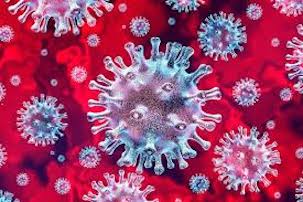Following our earlier posting, Capitalism and Health – Plus Ca Change, we are posting this edited article from Left Voice in the USA.
CAPITALISM IS A VIRUS – VALUE CHAINS
Belokamenka is a rural community in the Russian arctic with a permanent population of just 85 people. The locality is hundreds of miles from anything resembling a city and is one of the last places you would expect a major outbreak of COVID-19. And yet in late April, more than 200 temporary residents — workers on a liquid natural gas supply facility construction site — were diagnosed with the disease. The outbreak spread quickly throughout the 600 acre construction site in large part because of the crowded living conditions of the workers and the total lack of any social distancing measures. But how did the virus manage to get to such a remote location in the first place? How did a disease that was originally diagnosed in Wuhan, China manage to make it to the farthest reaches of the globe in such a short period of time, despite all efforts to contain it? The answer is simple: the disease spread so quickly — quicker than any previous virus — by following the very same circuits that connect the global just-in-time supply chain, a chain that is powered by the kind of cheap energy that the Belokamenka facility makes possible and the kind of cheap immigrant labor needed to build such a facility. While human viruses have often followed the flow of commodities — the bubonic plague, for instance, traveled along trade routes for years — the speed and massive scale of globalized capitalism has produced a scenario in which disease can spread across the entire planet in just a matter of weeks. In this respect, COVID-19 is the first great pandemic of the age of global capitalism.
However, as Kim Moody explains, the very same circuits that have allowed both products and diseases to travel across the globe at lightning speed are only made possible by the highly-exploited labor of millions of logistics workers across a handful of companies, and these circuits are thus extremely vulnerable to disruption. As Moody explains:
Three decades of streamlining and refining the movement of goods along tech-enhanced but labor-intensive supply chains have accelerated the speed of disease transmission as well as of commodities and money. But the very speed of these taut arteries of commerce has also increased their vulnerability to disruption.
The competitive value that these supply chains provide is almost entirely dependent upon their ability to get commodities and raw materials where they need to be exactly when they are needed. Any minor disruption along the way can throw the whole process into chaos and cost companies millions or tens of millions of dollars a day in expenses or lost profits. For Moody, the lesson here is obvious. Capitalism’s drive toward efficiency and its attempts to squeeze value out of every minute of the process of production and distribution, mean that workers in the industries that make these supply chains possible (not to mention those who work in high value-added production near logistics hubs and those who help produce and maintain the logistics infrastructure) have an enormous amount of potential leverage. In effect, the nature of the global supply chain shows that despite all of the advanced technology behind global capitalism, it is still working people who make the world run, and it is working people who have the power to shut it down.
Not surprisingly, these essential workers, those who toil in or help to support the many tendrils of the global supply chain, are also some of the most vulnerable. While millions of working people have been laid off and thrown into poverty, those still on the frontlines of distribution, transport, and food and energy production are being forced to take the greatest risks often with the fewest protections. The migrant workers at Belokamenka, for instance, had no personal protective equipment, no gloves, masks, or antiseptics. In the U.S., distribution center and delivery personnel are forced to work in facilities where the virus has already been detected, often without adequate personal protective equipment. Meanwhile, food processing workers across the country, particularly in meat and poultry factories, have seen rates of infection above 50% in some workplaces. Many of these frontline workers are poor people of color and immigrants who are living paycheck to paycheck and cannot afford to take time off to quarantine. Undocumented workers in particular, because they are receiving no relief from the “stimulus package,” are not eligible for unemployment, and are subject to deportation at any moment, are effectively forced to work in unsafe conditions or face economic ruin.
________
also see:-

